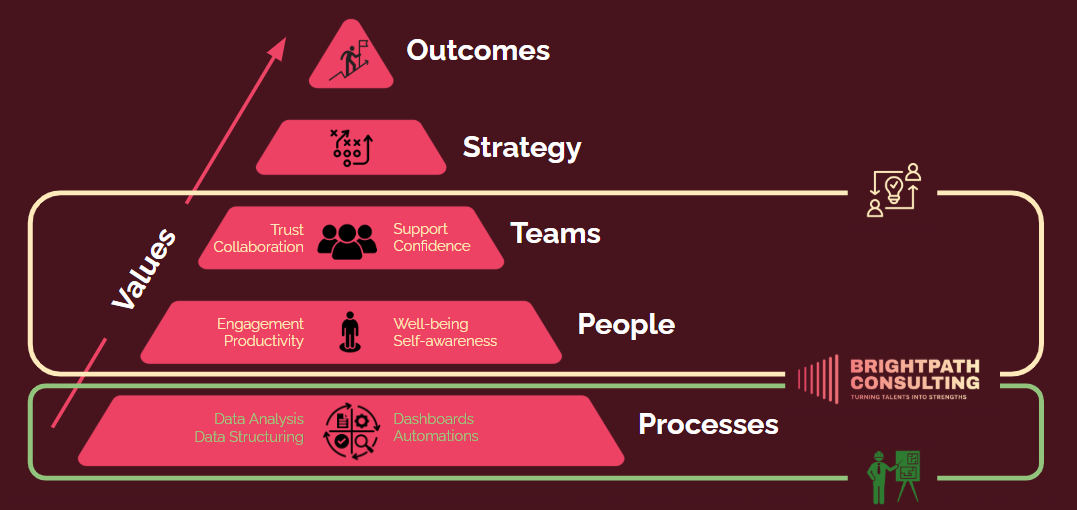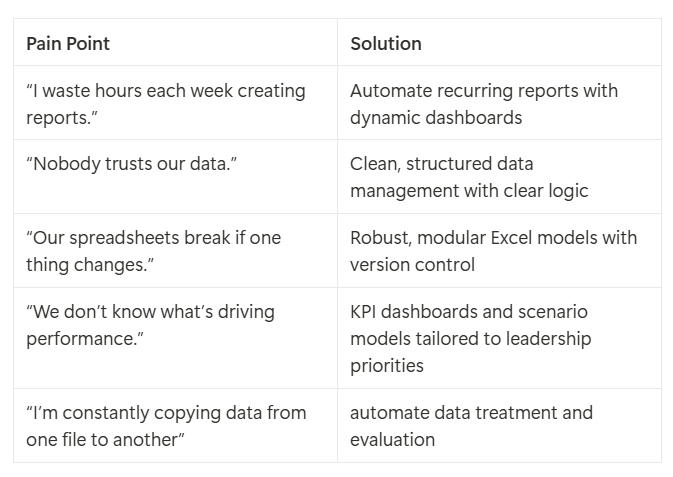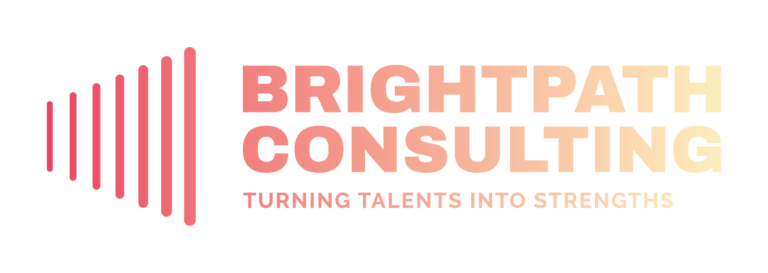This month’s issue spans the full range—from optimizing spreadsheets to clarifying your personal brand. I’ll introduce Excel or Data Architecture as a way to free up your team’s time, share a simple guide to crafting your leadership brand, and offer a quick gratitude prompt that might just brighten someone’s day. It’s all connected.
What are our topics for today?
- Services – Excel Architect: What is this and who can benefit?
- Personal Brand: A guide to create your Personal Brand
- Self-Reflection / Mindfulness: Gratitude for the Overlooked
Services - Excel Architect
I want to introduce a service that I have not yet really advertised, but given what I have been observing over the last months, deserves a spot light.
I have had multiple conversations, with business owners, fractional CxOs and leaders of other organizations, talking about their process efficiency and how they use data in their day-to-day operations. To no surprise, every single person is using data and most of them in Microsoft Excel. I have seen everything, from a multi-million dollar construction company run of a single spreadsheet to employees spending hours copying and pasting information from one spreadsheet to another.
Most of you know me well enough to know how irritated I get with inefficiencies and clunky processes. “There has to be a better way to do this.”
The solution to many of these problems is what I call an Excel or Data Architect.
First, what is an Excel Architect?
An Excel Architect is a strategic problem-solver who designs custom (Excel) data and reporting solutions that save time and reduce manual work, reduce errors through automations, improve decision-making, and align with a team’s workflow and business goals.
Starting with looking at the big picture and how all the files are connected and working together, an Excel Architect designs an optimal data flow between files and within files, using formulas, Power Query and VBA.
Where does it fit in my service portfolio?
My goal is to set up employees and leaders for success from day one. Most employees require data in some way, shape or form to do their job. However, in many cases, they have to create this data in a cumbersome and inefficient way that takes away from their time to do the job they were actually hired for: finding creative solution, solving complex problems or making decisions.
The less time we spend on creating this foundational (and reliable) data, the more freedom we have to be creative and effective.

Processes are the foundation of every organization, they provide the framework for the employees to do their jobs.
Let’s make sure employees have everything they need to be successful.
Who is it for?
Technically, for everyone who uses Excel as key tool for their job or heavily relies on data. Typical roles could be:
- fractional CxOs, especially CFOs
- Quality, Production and Operations Managers
- AP/AR, Billing, Controlling
- CEOs
- Project Managers
- Anyone involved in business planning
These are just a few roles but all of them require different forms of data to perform their jobs.
What pain points do I solve?
Here are some scenarios that might give you an idea where the service fits in:

If you or someone you know relies heavily on Excel and feels stuck in repetitive or clunky workflows, let’s chat. I’d be happy to take a look and offer some suggestions.
Personal Brand
Bear with me – now we are taking a 180 turn and move from data and analytics to people and communication.
Today I want to share my personal Leadership Brand with you:
“I am a genuine, people-first leader with a lot of energy who loves to work hard with a team and values direct and timely communication. I foster long-lasting relationships and bring out the best in people by challenging the status quo, always looking for the next step, and the best way to get there. I calmly navigate challenging situations, by helping people identify the needs of others, leading to the best quality results for everyone involved.”
Not only has this statement helped me introduce myself but it also helps me to refocus and provide orientation when I feel overwhelmed. This is what people should get from me when I am at my best.
To get to this point, it starts out with a Personal Brand. A Personal Brand is a statement consisting of 2-3 sentences that helps you articulate on a high level who you are and how you add value to a team.
This is something I use in my coaching sessions or workshops but it can also be done as a stand-alone exercise. It can be done with or without the support of CliftonStrengths.
Here is a 2-page worksheet that allows you to create a first version of your Personal Brand.
Share your first version with your spouse or trusted co-worker at work. See what they say and then keep refining it.
In my specific case, I skipped over those elements because I was too excited and wanted to move forward fast. In hindsight, I missed the very first step, the foundational piece of Understanding was not there. When I said or described something, I thought I was understood but it turned out that we could not have been farther away from each other.
My personal lesson is to slow down and take the necessary time to make a good decision. No matter how big the excitement is, being thorough in the beginning saves a big headache in the end.
Self-Reflection
A big part of creating your Personal Brand is self-reflection (obviously, *duh*) so let’s push this exercise towards mindfulness – Gratitude for the Overlooked:
So, let’s try the following:
- Ask yourself quietly: “Who in my life supports me in ways I rarely acknowledge?”
Ask yourself: “When was the last time I told this person how much I appreciate them?”
- What’s one small thing you can do today to show them appreciation?
Gratitude is most powerful when shared.
Taking a few moments for self-reflection helps make us aware of our impact and provides an opportunity to appreciate our growth.
Give it a shot, try it out.
Even consider writing down your responses. Going back through those notes can really lift you up when you have a bad day or help when you are facing self-doubts.

